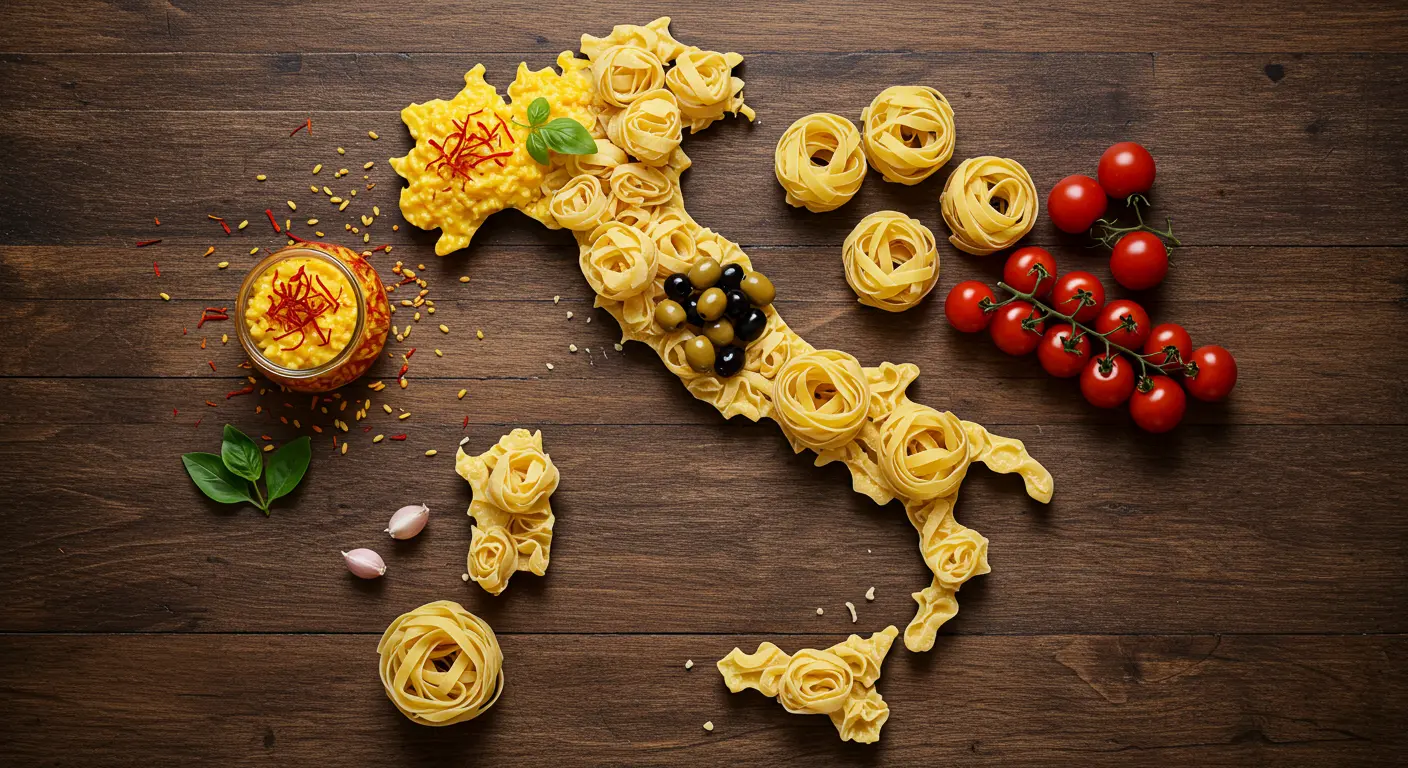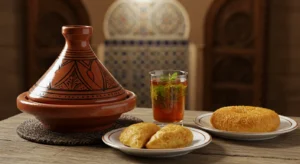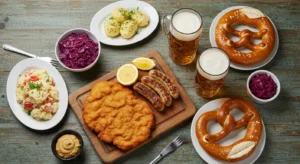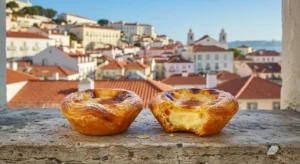Table of Contents
A Beginner’s Guide to( Italian)Italy Food: Your Passport to Authentic Flavors
You close your eyes and picture it: the scent of garlic and basil wafting from a bustling kitchen, the sound of a cork popping from a Chianti bottle, the sight of a perfectly golden, wood-fired pizza. When we think of Italy food, it’s easy to get stuck on the famous exports—the pizza, the pasta, the gelato. But what if I told you that these beloved dishes are merely the opening chapter of a much richer, deeper, and utterly captivating story?
The true magic of Italian cuisine isn’t found on a chain restaurant menu. It’s in the nonna’s (grandmother’s) hands rolling pasta dough in a small village in Emilia-Romagna. It’s in the sun-drenched tomato fields of Sicily. It’s in the philosophy that the best food is simple, seasonal, and made with pride. This guide is your first step into that world. We’re moving beyond the clichés to explore the heart and soul of authentic Italian cooking. Consider this your friendly, informal passport to a culinary adventure you’ll never forget.
The First Rule of Italy Food Club: It’s Regional, Not National
Here’s the biggest secret to understanding Italian food: forget “Italian cuisine” for a second. Instead, think of it as a collection of 20 distinct regional cuisines, each with its own terrain, history, and pantry. The food in the snowy Alps of the north has almost nothing in common with the sun-baked dishes of the southern coast.
- Northern Italy: Think rich, creamy, and hearty. Here, you’ll find butter, polenta, risotto, truffles, and hearty meats like osso buco. It’s comfort food for colder climates.
- Central Italy: This is the heartland of many of our favorites. Tuscany is famous for its simple grilled meats, olive oil, and bean stews (ribollita). Umbria is known for black truffles and pork, while Lazio is home to Rome and its iconic pasta dishes like Cacio e Pepe and Carbonara.
- Southern Italy & The Islands: Welcome to the land of vibrant, sun-drenched flavors. This is the home of the tomato, olive oil, fresh seafood, spicy peppers, and dried pasta. Sicily and Sardinia have their own unique identities, influenced by centuries of trade and conquest, featuring ingredients like saffron, citrus, and almonds.
Understanding this regional diversity is the key that unlocks everything. It explains why a Bolognese sauce (ragù) from Bologna is a slow-cooked meat masterpiece served with tagliatelle, not spaghetti.
Your Handy Guide to Must-Try Dishes (Beyond the Usual Suspects)
Sure, you should have pizza in Naples and gelato in Florence. But to truly connect with Italian food culture, you need to explore the menu a little deeper. Here are a few iconic dishes to add to your culinary bucket list.
Antipasti: The Art of the Start
Meals rarely begin with a main course. They start with antipasti (before the meal), a delightful array of small bites designed to awaken the palate.
- Prosciutto e Melone: The sublime combination of salty, aged ham (prosciutto) with sweet, ripe cantaloupe. It’s a perfect harmony of flavor and texture.
- Bruschetta: Not just chopped tomatoes on toast! Authentic bruschetta is grilled bread rubbed with garlic, drenched in high-quality olive oil, and then topped with the freshest possible ingredients—maybe tomatoes, maybe cannellini beans, maybe leftover chicken livers (crostini di fegatini in Tuscany).
Primi: The Pasta (& More) Course
This is where the carbs shine. The primo (first course) is typically a pasta, risotto, soup, or polenta dish.
- Risotto alla Milanese: A show-stopping saffron-infused risotto from Milan, known for its creamy consistency and vibrant yellow color. It’s a testament to the power of a few simple, high-quality ingredients.
- Orecchiette con Cime di Rapa: From Puglia, this dish features “little ear” pasta with sautéed bitter broccoli rabe, garlic, chili flakes, and anchovy. It’s a powerful, earthy, and unforgettable flavor experience.
- Tortellini in Brodo: A classic from Bologna, these delicate meat-filled pasta parcels are served not with a heavy sauce, but in a clear, nourishing capon broth. It’s the ultimate comfort food.
Secondi: The Main Event
The secondo is the protein course, often served simply grilled or roasted with just a wedge of lemon. This is where you’ll find the famous Bistecca alla Fiorentina (a massive T-bone steak from Florence) or Pesce alla Griglia (whole grilled fish) along the coast.
How to Eat Like a Local: The Italian Food Rules of Engagement
It’s not just what you eat, but how you eat it. Embracing the rhythm of an Italian meal is part of the experience.
- Espresso is for the Morning (and After Meals): You won’t see many Italians walking around with giant milky coffees all day. A quick, powerful espresso is consumed at the bar, often standing up. A cappuccino? That’s strictly a morning drink, never ordered after a meal.
- Pasta is a Course, Not the Whole Meal: Remember the structure: antipasto, primo, secondo, contorno (side dish, like a salad), dolce (dessert). You don’t have to order every course, but it explains why portions of pasta are often smaller and more refined than we’re used to.
- Seasonality is Sacred: Italians will wait all year for the first artichokes of spring (carciofi) or the white truffles of autumn. Menus change based on what’s fresh and local. Asking “what’s in season?” is the best way to get the best meal.
- The Sacredness of Simplicity: As the famous food writer Marcella Hazan once taught, the quality of the ingredient is paramount. You can’t hide poor ingredients behind heavy sauces. A perfect example is her legendary tomato sauce with just onions, butter, and tomatoes – a recipe that has broken the internet for its simplicity and perfection.
Bringing a Taste of Italy to Your Kitchen
You don’t need a plane ticket to start enjoying authentic flavors. Start with one simple, regional recipe. Invest in a good bottle of extra virgin olive oil (it’s meant for drizzling on finished dishes, not just cooking). Buy the best tomatoes or cheese you can find. Most importantly, cook with joy and share it with others. That, after all, is the true spirit of Italian food.
Frequently Asked Questions (FAQs)
Q: Is it true that you shouldn’t ask for cheese to put on seafood pasta?
A: It’s a major culinary faux pas in Italy, especially in coastal regions. The belief is that the strong flavor of cheese (like Parmesan) overpowers the delicate, fresh taste of the seafood. When in Rome (or Naples, or Sicily)… do as the Romans do and skip it!
Q: What’s the difference between gelato and ice cream?
A: It comes down to three things: fat, air, and serving temperature. Gelato uses more milk and less cream than ice cream, so it has less butterfat. It’s churned slower, incorporating less air, making it denser. And it’s served slightly warmer, which makes the flavors more intense and the texture softer.
Q: I’m a vegetarian. Will I find good options in Italy?
A: Absolutely! While many classic dishes feature meat or seafood, Italian cuisine is incredibly vegetable-forward. From Melanzane alla Parmigiana (eggplant parmesan) and countless pasta sauces (pomodoro, arrabbiata, pesto) to risottos, soups, and incredible grilled and roasted vegetable side dishes (contorni), you will eat very well.
Q: What is the “aperitivo” hour I keep hearing about?
A: It’s one of the best Italian traditions! Roughly between 6 PM and 9 PM, bars serve drinks like Aperol Spritz, Campari, or a glass of prosecco, often accompanied by a complimentary spread of small snacks like chips, olives, or small sandwiches. It’s not a meal, but a pre-dinner social ritual to whet your appetite.
Conclusion: Your Journey Has Just Begun
The world of Italy food is a deep, delicious, and endlessly rewarding one. It’s a cuisine built not on complexity, but on passion, quality, and a profound connection to place and family. So, the next time you sit down for a meal, think like an Italian: seek out the best ingredients, keep it simple, savor every bite, and, most importantly, share the experience with good company. Buon appetito!




